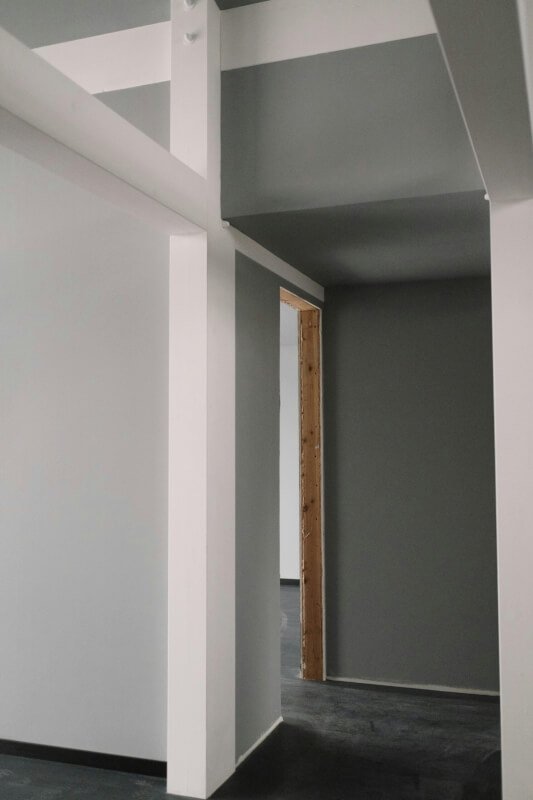Looking to create a convenient and budget-friendly home gym? Look no further than the “Guide To Building A DIY Home Gym Power Rack.” This comprehensive guide provides you with all the necessary steps, tips, and tricks to construct your very own power rack, perfect for strength training and lifting exercises. Say goodbye to expensive gym memberships and hello to your very own personalized workout space. With this guide, you’ll be well on your way to building a sturdy and functional power rack that suits your fitness needs. So, roll up your sleeves and get ready to embark on an exciting DIY project that will transform your home into a fitness haven.

Safety Considerations
Choosing the Right Location
When setting up your DIY home gym power rack, it’s important to choose the right location. Look for a space in your home that is well-ventilated and has sufficient lighting. Make sure there is enough room around the power rack to move freely and perform exercises without any obstructions. Also, consider the noise level of your workouts and choose a location that won’t disturb others in your household or neighbors.
Ensuring Structural Integrity
Before starting the construction of your power rack, it’s crucial to ensure the structural integrity of the area where it will be placed. Check the flooring and walls for any signs of damage or weakness. Make sure the floor can support the weight of the power rack and the weights you’ll be lifting. Reinforce any weak areas or consult with a professional if needed to ensure that your DIY power rack is safe and stable.
Protective Flooring
To prevent damage to your floors and reduce the noise level during your workouts, consider using protective flooring underneath your DIY power rack. Rubber mats or interlocking foam tiles provide a cushioning effect, absorb impact, and protect the floor from scratches or dents caused by dropped weights. This not only helps to prolong the lifespan of your floors but also enhances safety by providing a stable and non-slip surface for exercising.
Having Proper Clearance Space
When planning the layout of your DIY home gym power rack, make sure to leave enough clearance space around it. This ensures that you can perform exercises comfortably and safely. Allow sufficient space for each exercise, considering the full range of motion and any potential movements in different directions. Having proper clearance will reduce the risk of injury and make your workouts more enjoyable.
Planning and Design
Determining the Size and Dimensions
Before you start building your DIY power rack, it’s important to determine the appropriate size and dimensions. Consider the available space in your home and the specific exercises you plan to do. Measure the height, width, and depth of the area where the power rack will be placed to ensure it fits comfortably. Also, factor in your own height and any space requirements for accessories or attachments you may want to add.
Assessing Your Fitness Goals
When designing your DIY power rack, consider your fitness goals and the types of exercises you want to incorporate into your routine. If you’re focused on strength training, you’ll need a power rack that can accommodate heavy barbell lifts and possibly features such as a pull-up bar or dip station. On the other hand, if your goal is more general fitness or conditioning, a simpler power rack design may be sufficient. Understanding your fitness goals will guide you in choosing the right features for your DIY power rack.
Deciding on Features and Accessories
Once you have identified your fitness goals, it’s time to decide on the specific features and accessories you want to include in your DIY power rack. Consider features such as a pull-up bar, dip station, weight plate storage, and safety straps. Think about the exercises you enjoy or want to incorporate into your routine and choose accessories that will enhance those movements. Customizing your power rack with accessories allows you to create a set-up that aligns perfectly with your fitness needs and preferences.
Taking Measurements
To ensure accurate construction, take careful measurements of all the components of your DIY power rack. Measure the length, width, and thickness of the steel or metal you’ll be using. If you plan to use specific hardware or accessories, measure their dimensions as well. Accuracy in measurements will help prevent mistakes during construction and ensure that all the parts fit together seamlessly.

Materials and Tools
Selecting the Right Steel
Choosing the right type of steel for your DIY power rack is crucial for its strength and durability. Look for high-quality steel that can withstand heavy loads and provide stability during your workouts. Common options for power rack construction include square or rectangular tubing with a sufficient gauge thickness. Consider consulting with a professional or researching reputable suppliers to ensure you select the appropriate steel for your DIY power rack.
Choosing the Appropriate Hardware
The hardware you choose for your DIY power rack plays a crucial role in its overall strength and stability. Opt for high-quality hardware that can support heavy weights and withstand constant use. Look for sturdy bolts, nuts, washers, and other fastening components that are designed for high load capacities. It’s important to use the correct size and type of hardware specified in your power rack plans to ensure a secure and safe construction.
Gathering the Essential Tools
Before you begin constructing your DIY power rack, gather all the essential tools you’ll need for the project. These may include a tape measure, level, wrenches, screwdrivers, a drill, drill bits, a saw, a grinder, and various clamps. Having the right tools on hand will not only make the construction process easier but also ensure that your power rack is assembled properly and securely.
Optional Equipment for Customization
In addition to the essential tools, you may also need some optional equipment for customization of your DIY power rack. This can include a welding machine if you plan to weld certain components, a pipe bender for creating curved parts, or a metal cutting saw for precision cuts. Depending on the level of customization you desire, you may choose to invest in these additional tools to achieve your desired results.
Building the Base
Constructing the Uprights
The uprights are a key component of your DIY power rack, providing stability and support during your workouts. Construct the uprights according to your measured dimensions and desired height. Use the selected steel tubing and securely connect the pieces together using appropriate hardware. Ensure the uprights are aligned vertically and securely fastened to ensure the stability of your power rack.
Creating the Base Frame
The base frame provides the foundation for your DIY power rack. Cut and assemble the steel tubing according to your measured dimensions, ensuring that the base frame is sturdy and level. Square up the corners and attach the various components with strong bolts and fasteners. A well-constructed base frame will provide a solid platform for the rest of the power rack’s construction.
Adding Crossbars for Stability
To enhance the stability and strength of your DIY power rack, add crossbars between the uprights. These crossbars help prevent lateral movement and provide additional support for heavy weights. Measure and cut the steel tubing to the appropriate length, ensuring a tight fit between the uprights. Securely attach the crossbars to the uprights using strong bolts and hardware, ensuring the entire structure is stable and secure.
Securing the Base to the Floor
To ensure maximum stability and safety, it’s important to secure the base of your DIY power rack to the floor. This prevents any sliding or tipping during intense workouts. Depending on your flooring type, there are various options for securing the power rack, such as using heavy-duty floor anchors, concrete screws, or even bolting the power rack to a dedicated platform. Choose the method that is most suitable for your specific flooring material and consult with professionals if needed.

Assembling the Frame
Attaching the Uprights to the Base
With the base frame in place, it’s time to attach the uprights to create the frame of your DIY power rack. Carefully position the uprights at the desired height and securely fasten them to the base using the appropriate hardware. Ensure that the uprights are level and parallel to each other, maintaining the measurements you determined during the planning and design phase. Proper attachment of the uprights is crucial for the stability and structural integrity of your power rack.
Building the Header Beam
The header beam is an important component that provides additional support and stability to your DIY power rack. Measure and cut the steel tubing to the desired length, ensuring it fits snugly between the uprights. Attach the header beam securely to the uprights using appropriate hardware, ensuring that it is level and aligned with the base frame. The header beam strengthens the entire structure and helps distribute the weight evenly during your workouts.
Installing Side Braces
Side braces further enhance the stability and rigidity of your DIY power rack. Measure and cut the steel tubing to the appropriate length, ensuring a tight fit between the uprights and the header beam. Attach the side braces securely to the respective components, using heavy-duty bolts and hardware. Properly installed side braces will prevent any wobbling or shaking during your workouts, enhancing the overall safety and performance of your power rack.
Positioning J-Cups and Safety Straps
J-Cups and safety straps are essential accessories for safely performing barbell exercises in your DIY power rack. Position the J-Cups at the desired height within the uprights, ensuring they are secure and level. These will hold the barbell during your lifts. Additionally, install safety straps at appropriate heights to provide an extra layer of protection in case of failure or fatigue during exercises. Properly positioned J-Cups and safety straps will enhance your safety and give you peace of mind during your workouts.
Creating Additional Supports
Adding Upper Crossmembers
Adding upper crossmembers to your DIY power rack enhances its stability and provides additional attachment points for accessories. Measure and cut the steel tubing to the appropriate length, ensuring they span across the width of your power rack. Attach the upper crossmembers securely between the uprights, using strong bolts and hardware. These crossmembers will strengthen the frame and offer more options for customizing your power rack.
Attaching Diagonal Braces
Diagonal braces are crucial for reinforcing the overall structure of your DIY power rack. Measure and cut the steel tubing to create diagonal pieces that connect the uprights to the base frame or the header beam. Attach these braces securely using appropriate hardware, ensuring they are tight and stable. The diagonal braces will prevent any twisting or wobbling of the power rack, providing additional stability during your workouts.
Strengthening the Frame with Gussets
Gussets further strengthen the frame of your DIY power rack by reinforcing important connection points. Measure and cut the steel plates or tubing to the appropriate size, ensuring they cover the joints between different components. Weld or securely attach the gussets to the frame using appropriate methods and hardware. The addition of gussets will significantly enhance the strength and durability of your power rack, ensuring its long-term stability.
Supporting Weight Plate Storage
If you plan to store weight plates on your DIY power rack, consider adding weight plate storage features. Measure and cut the steel tubing or plate holders to the appropriate length, ensuring they securely hold your weight plates. Attach these storage components to the base frame or the uprights using appropriate hardware, ensuring they are stable and reliable. Proper weight plate storage will keep your gym space organized and prevent any hazards or accidents caused by loose plates.

Finishing Touches
Sanding and Smoothing the Surfaces
Before painting or applying protective coatings, it’s essential to sand and smooth all the surfaces of your DIY power rack. Use sandpaper or a sanding block to remove any rough edges, burrs, or weld splatter. Smooth any sharp corners or surfaces that may cause injury during use. Pay attention to all visible and accessible areas, ensuring they are safe and comfortable for your workouts.
Applying Protective Coatings or Paint
To protect your DIY power rack from rust and corrosion, apply a protective coating or paint to the surfaces. Choose a coating that is designed for metal and provides sufficient durability and resistance to wear. Apply multiple coats as recommended, following the manufacturer’s instructions. This will not only enhance the longevity of your power rack but also give it a professional and finished appearance.
Adding Padding for Comfort and Safety
To increase comfort and safety during your workouts, consider adding padding to certain areas of your DIY power rack. Foam padding can be placed on the bars where you perform exercises such as squats or bench presses. This provides cushioning and reduces the risk of accidental injury. Secure the padding with appropriate fasteners or adhesive, ensuring it is properly positioned and doesn’t interfere with the functionality of the power rack.
Attaching Accessories and Mounting Points
Once the main construction of your DIY power rack is complete, you can start adding accessories and mounting points for customization. Attach a pull-up bar, dip station, or other desired accessories according to the manufacturer’s instructions. Install any additional mounting points for future attachments or equipment. Customizing your power rack with accessories and mounting points allows for versatility and the ability to adapt to changing fitness goals.
Safety and Maintenance
Regular Inspections and Maintenance
To ensure the safety and longevity of your DIY power rack, perform regular inspections and maintenance. Check for any signs of wear, loose bolts or hardware, or structural damage. Tighten any loose components, replace worn-out or damaged parts, and clean the power rack regularly. Performing routine maintenance will help identify any potential issues early on and prevent accidents or injuries during your workouts.
Ensuring Proper Weight Capacity
Your DIY power rack has a specific weight capacity that should not be exceeded. It’s important to know the weight limits and ensure that you’re using appropriate equipment and weights within those limits. Overloading the power rack can cause structural failure, leading to accidents or damage. Always consult the manufacturer’s guidelines or consult with professionals if you have any doubts about the weight capacity of your power rack.
Using Spotter Bars and Safety Net
When performing exercises that involve heavy weights or require a spotter, always use spotter bars or a safety net with your DIY power rack. Spotter bars are adjustable horizontal bars that can be positioned at a safe height to catch the barbell in case of failure or fatigue during lifts. A safety net provides an additional layer of protection under the weightlifting area. Using spotter bars or a safety net can prevent serious injuries and give you the confidence to push your limits safely.
Maintaining Cleanliness and Organization
Keeping your DIY power rack clean and organized is essential for both safety and ease of use. Regularly clean the frame and all its components to remove dirt, dust, and sweat that can accumulate over time. Organize your weight plates, accessories, and other equipment in a tidy manner to minimize the risk of tripping or falling during your workouts. A clean and organized DIY power rack creates a more enjoyable and efficient workout environment.

Customization and Expansion
Integrating Additional Attachments
One of the advantages of a DIY power rack is the ability to customize and add attachments as needed. Based on your fitness goals and preferences, consider integrating additional attachments such as landmine attachments, pulley systems, or resistance band anchors. These added options can expand the variety of exercises you can perform and offer new challenges to your workouts. Follow the manufacturer’s instructions and ensure the attachments are securely installed for safe and effective use.
Incorporating Pull-Up Bars or Dip Stations
To further enhance the versatility of your DIY power rack, consider incorporating pull-up bars or dip stations. These attachments provide opportunities for bodyweight exercises that target different muscle groups. Choose options that fit securely within the framework of your power rack and ensure they are stable and reliable. Incorporating pull-up bars or dip stations can add diversity to your workouts and help you achieve a well-rounded fitness routine.
Expanding Storage Capacity
If you find that your DIY power rack doesn’t provide sufficient storage space for your equipment, consider expanding its storage capacity. You can add additional weight plate holders or shelves to keep your gym space organized. Utilize vertical spaces by attaching hooks or storage racks for smaller items such as resistance bands or jump ropes. Expanding the storage capacity of your power rack allows for easy access and contributes to a clutter-free and efficient workout environment.
Making Room for Future Upgrades
As your fitness journey progresses, you might want to upgrade or add new equipment to your DIY home gym. To future-proof your power rack, make sure to consider potential upgrades and allow space for expansion. Leave room for additional attachments or equipment that you may acquire down the line. Considering future upgrades in your design and construction process will save you time and effort of making modifications later on.
Cost Considerations
Estimating Material Expenses
When planning your DIY power rack, it’s essential to estimate the material expenses accurately. Consider the cost of steel tubing, hardware, paint or protective coatings, padding, and any optional attachments you may want to include. Research prices from different suppliers and compare options to ensure you’re getting the best value for your money. A well-prepared budget will help you manage your expenses and avoid overspending during the construction process.
Comparing with Pre-built Power Racks
While constructing your own DIY power rack offers customization and cost savings, it’s also worth comparing the costs with pre-built power racks available in the market. Consider the features, quality, and durability of pre-built options. If you find that the cost of building your own power rack is significantly higher than purchasing a pre-built one with similar features, it may be worth considering buying a ready-made power rack instead. Comparing prices can help you make an informed decision based on your specific needs and budget.
Considering Long-Term Cost Savings
While the initial cost of building a DIY power rack may seem higher than purchasing a pre-built one, it’s important to consider the long-term cost savings. By constructing your own power rack, you have control over the quality of materials used and can ensure its durability. This reduces the need for frequent replacements or repairs, ultimately saving you money in the long run. Additionally, the ability to customize and expand your DIY power rack allows you to optimize its functionality and adapt it to your evolving fitness needs without additional expenses.
Budget-Friendly Alternatives
If you have a limited budget, there are several budget-friendly alternatives for building a DIY home gym power rack. Consider using reclaimed or salvaged materials, such as metal pipes or scaffolding, which can be repurposed for constructing the frame. Additionally, explore local classifieds or online marketplaces for used equipment, such as weight plate holders or attachments, to further reduce costs. With some creativity and resourcefulness, you can build a functional and safe DIY power rack without breaking the bank.
In conclusion, building a DIY home gym power rack requires careful planning, consideration of safety guidelines, and attention to detail. By choosing the right location, ensuring structural integrity, and having proper clearance space, you can create a safe environment for your workouts. Planning and design involve determining the size, assessing your fitness goals, deciding on features and accessories, and taking accurate measurements.
Materials and tools selection is crucial, with the right steel, appropriate hardware, and essential tools being essential for the construction process. Building the base involves constructing the uprights, creating the base frame, adding crossbars for stability, and securing the base to the floor. Assembling the frame includes attaching the uprights to the base, building the header beam, installing side braces, and positioning J-Cups and safety straps.
Creating additional supports involves adding upper crossmembers, attaching diagonal braces, strengthening the frame with gussets, and supporting weight plate storage. Finishing touches include sanding and smoothing the surfaces, applying protective coatings or paint, adding padding for comfort and safety, and attaching accessories and mounting points. Safety and maintenance should be prioritized with regular inspections and maintenance, ensuring proper weight capacity, using spotter bars and safety nets, and maintaining cleanliness and organization.
Customization and expansion possibilities include integrating additional attachments, incorporating pull-up bars or dip stations, expanding storage capacity, and making room for future upgrades. Cost considerations involve estimating material expenses, comparing with pre-built power racks, considering long-term cost savings, and exploring budget-friendly alternatives. Building a DIY home gym power rack not only provides a cost-effective solution but also allows customization according to your fitness goals, ensuring a personalized and enjoyable workout experience.


